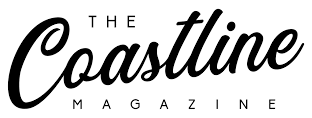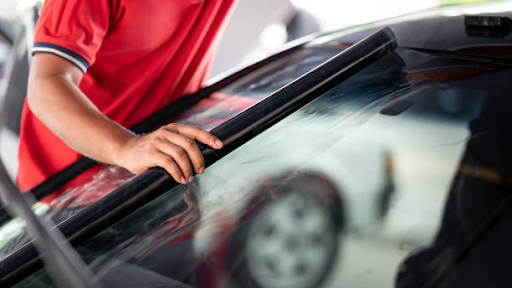The appearance and comfort of commercial vehicles are no longer afterthoughts; they play right into brand image and driver health. In that context, windshield tint has moved beyond mere style and is now discussed in boardrooms as a line-item investment that could help bolster the bottom line over a four-year lease. Glare drops, upholstery fade slows, cabin temperatures ease, and even driver focus tightens up when the glass is shaded properly.
In the pages ahead, we’ll unpack the tangible perks, the legal guardrails, and the hard-number return on investment that fleet operators can expect when they deepen the tint on their forward glass. We will also offer practical tips for finding the best window tint brand vendor so that every truck, van, or coupe in the inventory matches in look, complies with the letter of the law, and survives the daily grind.
Understanding the Legal Limits of Windshield Tint
Before a single roll of film is cut, fleet managers have to confront the patchwork of state and provincial regulations that govern windshield tint. Most statutes specify a minimum visible light transmission-VLT-number to ensure that drivers can see hazards, road signs, and pedestrians with full clarity, even at night or in pouring rain. Exceed that number, and the car instantly fails a roadside inspection, earning fines, paperwork, and potentially a scrapped installation, so knowing the local ceiling is non-negotiable homework.
Most state codes, not much more than a rule-of-thumb really, permit only a narrow 4- or 6-inch strip of darker film at the very top of the windshield. People usually call that little band an eyebrow or sun strip. In a handful of places, though, the law is easing up; inspectors will sign off on lighter tints or laminated UV sheets that keep visible-light transmission above 70 or 80 percent.
Fleet directors chase that tricky sweet spot: enough shading to fend off heat and glare, yet short of the point where a trooper waves them over. A reputable window-film manufacturer sticks a test stamp on the backing layer, hands over the paperwork, and generally saves the boss a long argument at the dock.
Uniform appearance bends beyond vinyl and tailgate stickers. All the trucks in matching glass look, at a glance, as if the firm sweated every detail. That tidy finish whispers quality even before products or names come into view.
A hint of color in the windshield can marry the glass to a vehicle’s body lines in one smooth stroke, giving a fleet that signature look. Whether a company leans toward sleek modernity or embraces rugged endurance, a quality window film whispers brand personality across dozens or even hundreds of rides. Consistency is everything when a thousand eyes are on the road. Sticking with the same premier tint manufacturer locks in identical optical clarity, tone, and reflectivity, so every truck or sedan matches-even if a different hand cuts the film at a different shop.
ROI: The Hidden Savings of Tinted Windshields
The sticker price for fleet windshield tint can make procurement managers wince, yet the bill pays for itself multiple times over once the numbers settle. One layer of film whispers across several cost columns.
Cutting Interior Damage: Good films refuse 99 percent of UV rays, which means dashboards and seats stay true to color and electronic displays are spared the slow burn of sunlight.
Cooling Costs Drop: Drivers in blistering heat zones use the AC less, leaving fuel invoices slimmer and engine belts quieter.
Safety Meets Comfort: Anti-glare coatings ease the early-morning stab of light, so alertness stays high and reaction times stay sharp.
Longer Vehicle Lifespan: Keeping the upholstery intact and cutting down on everyday scuffs means a tinted van or truck still looks good when its turn at resale comes up.
Multiply that small perk by an entire fleet, and you’re staring at savings that can run into the thousands-every bill counts on a budget. Spending on the best window film stops feeling like cosmetic fluff and starts looking like a smart bottom-line strategy.
Choosing the Right Tint Solution for Fleets
Not every roll of film is built for the pounding a delivery van takes, so a fleet supervisor has to be picky.
Legal Compliance: Grab a shade that comes with clear VLT paperwork and still plays nice with the local enforcement crew.
Durability: Fleet cars spend more time in the sun than most commuters, so go for scratch-resistant laminates and adhesives that won’t quit after a few hot months.
Ease of Installation: Pre-cut templates or wide-format rolls that lay down quickly can trim shop hours and keep technicians on schedule.
Warranty and Support: A solid, no-nonsense warranty paired with supplier training and steady bulk stock makes the difference between endless headaches and smooth sailing.
The top window-film makers say their product will play nice with everything from urban GPS to the adaptive sensors perched behind your windshield. None of that pitch matters if the tint still scrambles your car’s tech stack once it warms up.
Pasting dark film on a single personal ride is routine; roofing a company fleet of a hundred vehicles is another ballgame that demands real strategy. Simple steps keep the process orderly enough even for operators who live by deadlines.
Pick a tint spec for every chassis and stick with the same visual-light-transmission level no matter the trim upgrades that roll in mid-year.
That consistency saves time, money, and a fair bit of headache when the next lease cycle looms.
Teach in-house techs or hired installers to follow the same cutting, shrinking, and seaming routine so every windshield carries the same look and feel. A crew swapping in different adhesives or edge finishes overnight can turn neat work into a puzzling patchwork.
File records on film lot numbers, application dates, and warranty windows so the office can answer resale questions before they land on your desk. Paper trails also prove priceless if the glass ever gets scratched or the tint supplier suddenly shutters.
Circle back once a year for a quick walk-through, checking for bubbles, fading, or that unpleasant peeling edge that sneaks in after two summers. Regular eyes on the fleet avoid nasty surprises come renewal time.
None of these moving pieces runs smoothly without a dependable supplier capable of dispatching bulk rolls on short notice. The brand you choose today will either empower the growth or complicate every next mile.
Conclusion: Strategic Tinting for Fleet Efficiency and Brand Impact
By 2025, the humble windshield tinting has grown up. Once a pricey indulgence, a thin layer of film is now a factory finish that cools the cab, sharpens looks, and softens glare for any working fleet-whether its rideshare sedans, plumbing vans, or executive shuttles. Companies that adopt the technology routinely log a noticeable bump in comfort and, just as important, in the way customers picture the brand.
Finding the right window-tint maker is still a hands-on chore. Fleet leaders want a product that sticks, passes local rules, looks flawless week after week, and keeps passengers happy from morning shifts to rush-hour runs. In an arena where every detail counts, skipping up-market film isn-t an optional line item-it-s a one-way ticket to falling behind the next competitor.

